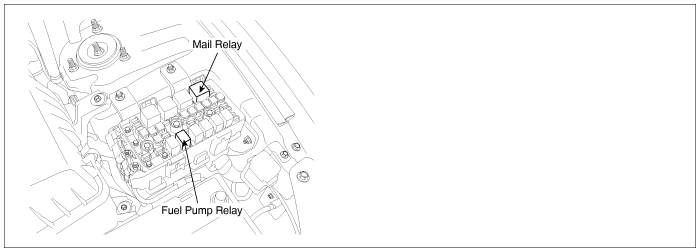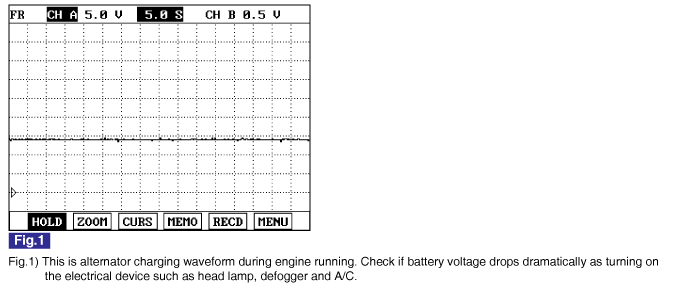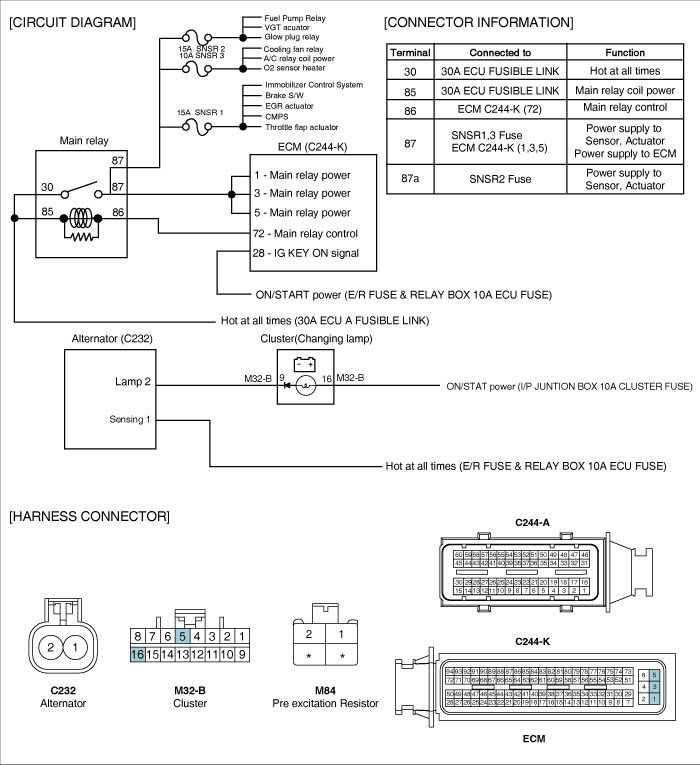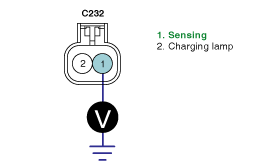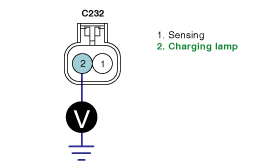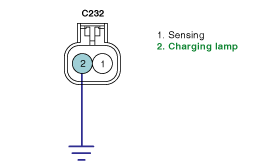Monitor "BATTERY VOLTAGE" parameter on the Scantool.
specification :12.5V~14.5V at idle without any load(800RPM)
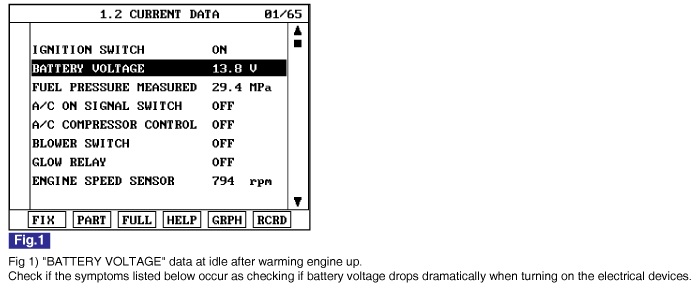
※ The vehicles with the alternator of poor charging efficiency
1. Lamps are dim at idle, while lamps are bright at acceleration.
2. Intermitently RPM drops excessively or engine shut down at low RPM close to idle state at times.
3. Smooth cranking happens rarely. (Warning lamps in cluster turn dimmer excessively at cranking and poor crankinghappen.)
4. Charging lamp turns on during driving.
